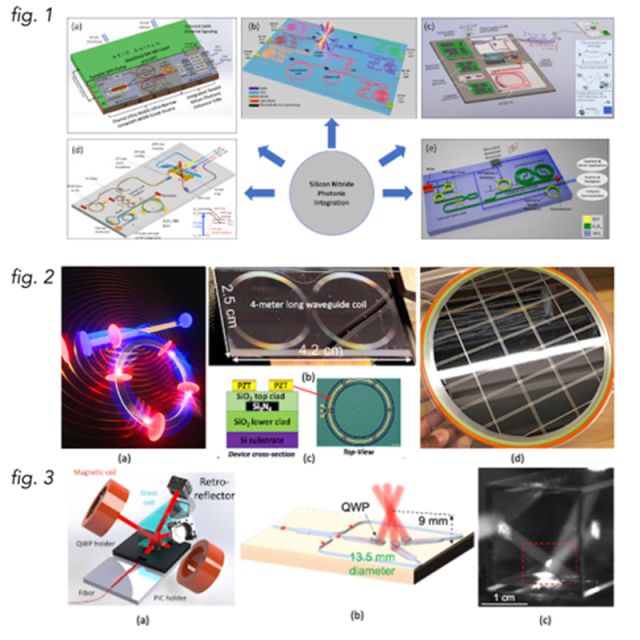Research Initiative: D. Blumenthal – OCPI Group
"Our group is consistently pushing the forefront of new technologies that enable the creation and manipulation of light on a chip"

Optical Communications and Photonics Integration Group
Excerpt from The ECE Current Newsletter (Fall 2022) article "Silicon Nitride Photonics: From Information to Atoms" (page 12)
We are in the midst of a new era of photonic integration, one that will impact a broad range of science, engineering, and applications, from data centers and fiber optic communications, to atomic clocks and our most precise ways to measure time (position and gravity), to harnessing the quantum nature of our universe for applications such as computing and sensing. This new photonic integration technology is needed to transform these fields, by moving today’s lab-scale size lasers and optics to the chip-scale to improve reliability, reduce cost, size, and weight, enable portability, and allow experiments to scale to very large numbers of lasers and optics, much like how the transistor and very large scale integration (VLSI) did for computing. In the Blumenthal group at UCSB, we have pioneered "silicon nitride photonics," a new class of enabling integration technology, sitting at the intersection between the way we transmit information with light over optical fibers and the way we use light to interact with and manipulate atoms. Our group then takes these new integration technologies and conducts applications and systems research in areas related to optical communications and atoms. Silicon nitride (Si3N4) is a semiconductor material, used in standard CMOS electronics, that has unique properties related to its a wide bandgap that makes it an ideal optical waveguide with extremely low optical losses operating from the visible (405 nm) to the infrared (2350 nm). The Blumenthal group has demonstrated the lowest optical waveguide losses in the world, less than 0.035 dB/meter at telecommunications 1550 nm wavelengths and less than 0.01 dB/cm at key wavelengths associated with transitions of atoms such as strontium and rubidium (atoms used for atomic clocks and sensors). These waveguides have been used to set world records on other devices including the highest quality factor (Q) resonators in the visible and IR. The Blumenthal group today is made up of a team of highly talented PhD students, whose work is described in this article: Nitesh Chauhan, Debapam Bose, Jiawei Wang, Mark Harrington, Kaikia Liu, and Andrei Isichenko.